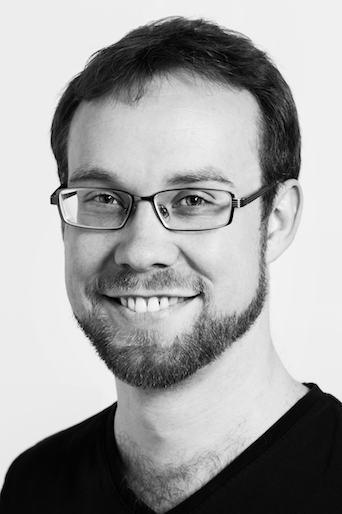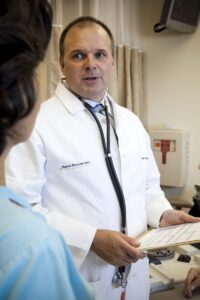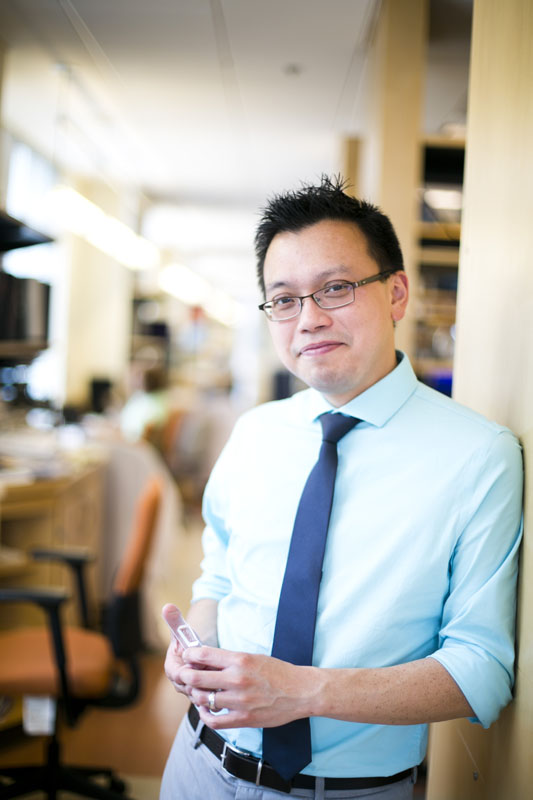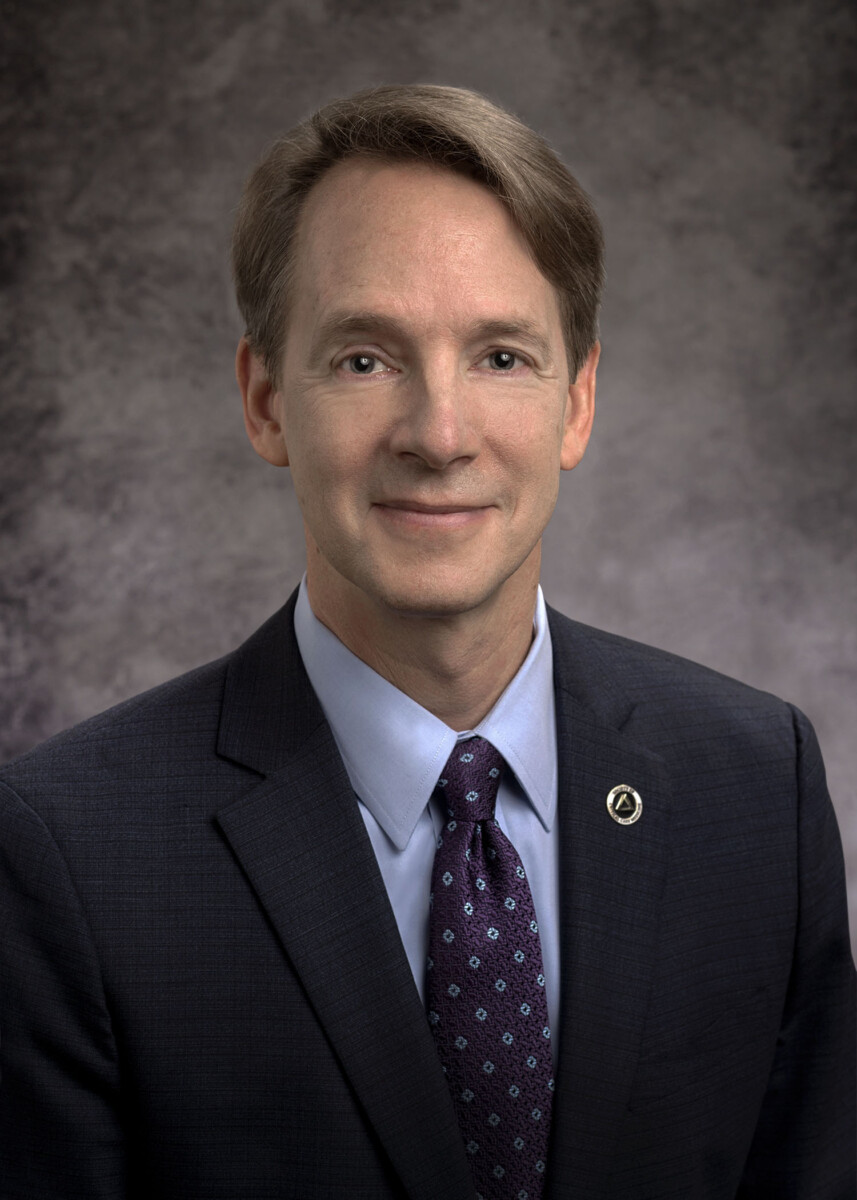Each spring, Emory’s Office of Technology Transfer hosts an Annual Celebration of Technology and Innovation. We are excited to announce the 2022 awardees! We took time to interview several of this year’s awardees to learn more about their technologies and their reaction to winning an award.
Innovation of the Year – KeyStrike: Securing Communications from an Untrusted Computer; Ymir Vigfusson, PhD
Can you introduce yourself?

Ymir Vigfusson, PhD
“I’m an Associate Professor in Computer Science at Emory University and a co-director of the Emory SimBioSys lab, where I work on large-scale networked systems, computational epidemiology, and information security. Alongside academia, I’ve co-founded multiple companies in the cybersecurity (Adversary was acquired in 2020, and Syndis in 2021). Having grown up as a hacker, these efforts are part of me making amends for my past, including working on how we can strengthen our existing systems against real attacks.”
What did you enjoy about winning an award?
“I am absolutely delighted that Emory OTT singled out our technology for this recognition. To us, whether in our department and in the SimBioSys lab, the award feels like an affirmation of our intentional focus on problems that are not only scientifically interesting, but that have tangible societal impact if they are successful. Academia is at the vanguard of predicting what society may need in the coming years. It’s a special privilege to work on connecting the dots between what could be and what is, and it’s particularly thrilling to find a technology that’s simultaneously very important and yet doesn’t yet exist.”
Can you tell us a little bit more about the technology/innovation you received the award for?
“Like many others, I lament the barrage of endless news about hacks, breaches, and cyberattacks since I know they only represent the very top of a large iceberg. The issue is that hacking is so much easier than playing defense: you only need to find one way in, whereas as a defender, you need to imagine and protect against all possible ways of breaking in. Security is hard.
The particular problem we started working on is on protection against even sophisticated hackers. In my previous startup that focused on penetration testing, I learned from our attack teams just how easy it is for an adversary to break into pretty much any organization: simply attack the employees and assume their identities to escalate your access. Various security systems, usually hyped up around machine learning, exist to try to detect unexpected behavior but they are ineffective for even modestly capable hackers because any organization will always have some reasonable degree of legitimate unexpected behavior and a stealthy attacker can take advantage of that. Multi-factor authentication (MFA) helps, since hackers can’t just authenticate with stolen credentials from far-away computers, but when an employee’s computer is compromised, MFA is unable to prevent the hacker from moving laterally on other computers within the organization by impersonating the employee.
Our solution at its core treats the employee’s entire computer system as untrusted. Using a small hardware module, our technology ensures that every command that was made by the employee was actually physically made on the machine. In other words, a hacker, with even full backdoor access to the employee’s system, is unable to burrow further into the organization’s machines since they cannot imitate the physical attestation for the command that is made by our module. If I put my hacker hat on, I get scared – I have no idea how to overcome this. And the key to enhancing security is to make it far more expensive for the attacker to make progress. I believe our technology achieves precisely that against even the most sophisticated attackers.”
What does receiving this award mean to you personally?
“Our lab was fortunate to inherit a highly collegial and supportive culture from the Department of Computer Science that values individual growth, diverse perspectives, and happiness. For me, I view the award as a testament to our lab’s philosophy: one can make impactful research contributions while also maintaining a healthy work-life balance. Similarly, the award feels like an affirmation of my own personal work-life balance and quest for minimizing regret, since, for an academic, I invest an unusually large portion of my energy in 4 long-term projects: my children. I hope it is empowering to others, particularly junior academics and those who don’t have the privileged opportunity to focus entirely on their careers, to know that you can succeed, and even excel, without needing to dedicate every hour of every day to work.”
Do you have one word to describe your feeling about winning this award?
“Elated; Hopeful! (Okay that’s two…)”
Start-Up of the Year – Cambium Medical Technologies; Edmund Waller, MD, PhD
Can you introduce yourself?

Edmund Waller, MD, PhD (Beckysteinphotography.com)
“I’m a professor in hematology and medical oncology, pathology, and internal medicine. I’ve been at Emory since 1994, after obtaining my undergraduate degree from Harvard College, a PhD from Rockefeller University, and a MD from Cornell Medical School. I received clinical training from Stanford University in internal medicine and medical oncology. I was recruited to Emory in 1994 to help support the burgeoning bone marrow transplant program that had been built up by Dr. Rein Saral after his recruitment from Johns Hopkins University. Over the past 28 years, I have built a transitional research program with NIH, Foundation, and corporate funding. I’ve made a number of scientific discoveries that have potential for clinical translation. I’ve started two companies, Cambium Medical Technologies and Cambium Oncology, to bring these discoveries to patients as FDA-approved drugs. Cambium Medical Technologies was formed to meet an unmet need I saw in patients with chronic graft versus host disease of the eye following allogeneic bone marrow transplantation.”
What did you enjoy about winning an award?
“I’m pleased that Emory has recognized the success of Cambium Medical Technologies in developing a therapeutic for ocular GVHD. Our mission is to develop new drugs to improve patient’s quality of life using principles of regenerative medicine. We have repurposed expired platelet products that would normally be discarded into an effective drug treatment for ocular GVHD.”
What are the next steps for this technology?
“We are close to completing a series B fundraising round in which a portion of our equity will be sold to investors in return for enough capital to launch and complete two phase three registration trials. We intend to enroll patients with ocular GVHD secondary to allogeneic bone marrow transplant and a second group of patients with moderate to severe dry eye disease who’ve not had a bone marrow transplant at multiple ophthalmology clinics in the US and in Taiwan. We anticipate completing these studies over an 18-month to 24-month period, after which we would prepare a package for FDA approval of Elate Ocular as a novel topical dry eye therapy.”
Do you have one word to describe your feeling about winning this award?
“Grateful!”
Start-Up of the Year – Cambium Medical Technologies; John Roback, MD, PhD
Can you introduce yourself?

John Roback, MD, Ph.D.
“My name is John D. Roback, MD PhD, and I am a Professor of Pathology and Laboratory Medicine at Emory. In the Department, I am Executive Vice-Chair for Clinical Operations. I am also the Medical Director for Emory Medical Laboratories.”
Can you tell us a little bit more about the technology/innovation you received the award for?
“FD-hPL is prepared from human platelets that were collected for transfusion but not used. We initially developed this product for use in cell culture applications, since human cells grown for cell therapy applications benefit from being grown in completely human-source supplements (such as FD-hPL) as contrasted with animal products such as bovine serum. We subsequently repositioned FD-hPL as a potential treatment for patients with dry eye diseases. It is for this application that we recently received FDA approval for a proposed Phase III clinical trial.”
What does receiving this award mean to you personally?
“It is very humbling to be recognized from among the numerous exceptional Emory start-ups that are founded every year.”
Do you have one word to describe your feeling about winning this award?
“Grateful.”
Is there anything else you’d like to add?
“We would like to acknowledge the critical role that Ian Copland, PhD played during the early days of developing FD-hPL and founding of Cambium. Ian tragically passed away in 2015, but his contributions are still critical to Cambium’s progress today.”
Significant Event of the Year – FDA Emergency Use Authorization of Molnupiravir; David Perryman, JD
Can you introduce yourself?

David Perryman, JD
“David Perryman, I am the COO of Drug Innovation Ventures at Emory (DRIVE) and also act as the Chief Intellectual Property Officer for DRIVE. I am the former CEO of a biotech company in the infectious disease space as well as the former Sr. Partner and head of the Biotech Group of a boutique IP law firm. I also co-founded a small Venture Capital fund and have founded and served on the board of several biotechnology companies. I represented the Emory, CDC, NIH, and Vanderbilt and through that saw the great world need to prevent and treat emerging infections. I left the practice of law many years ago to try to have a direct positive impact on emerging viral infections and biodefense.”
What did you enjoy about winning an award?
“It is recognition for all of the personal and professional risks we took to try to do something that the world desperately needed, a direct acting antiviral drug that could be used in the event of a pandemic to save lives and help keep people healthy.”
Can you tell us a little bit more about the technology/innovation you received the award for?
“The innovation is the discovery and development of molnupiravir, an oral direct acting antiviral drug, taken post infection to prevent hospitalization and death in at risk patients. Our goal was to develop an oral broad spectrum antiviral pill that could be used to treat a variety of viruses in the event of a pandemic or bioterror event. We started 10 years ago, seeing a need that not many people saw or cared to think about. We were developing EIDD-2801, which became molnupiravir, for influenza and other viral infections when SARS-CoV-2 emerged. Given the urgency of the looming pandemic, we quickly tested the drug against SARS-CoV-2 and found a commercial partner, Ridgeback, licensed the drug at warp speed to work with them to test the drug in humans. The positive Phase I results lead to the licensing of the drug to Merck and its development and ultimate authorization to treat COVID-19. So we were lucky enough to do exactly what we set out to do.”
What does this award mean to you personally?
“That I was part of a world class team that focused on a meaningful goal and accomplished it together. To work closely with George Painter and the EIDD team on this has been quite an honor and learning experience.”
Do you have one word to describe your feeling about winning this award?
“FOSSION (a combination of focus and passion).”
Corporate Partnership Award – RADx; Greg Martin, MD, Wilbur Lam, MD, PhD & Julie Sullivan
Can you introduce yourself?
Dr. Martin: “Professor of Pulmonary and Critical Care in the Department of Medicine, School of Medicine, Co-Director of the Atlanta Center for Microsystems Engineered Point-of-Care Technologies (ACME POCT) that spans Emory University, Georgia Tech and Children’s Healthcare of Atlanta, and Immediate Past President for the Society of Critical Care Medicine.”
Dr. Lam: “Professor and W. Paul Bowers Research Chair, Department of Pediatrics and the Wallace H. Coulter Department of

Wilbur Lam, MD, PhD
Biomedical Engineering, Aflac Cancer and Blood Disorders Center of Children’s Healthcare of Atlanta; Chief Innovation Officer, Pediatric Technology Center.”
Julie Sullivan: “Program Director/Chief Operating Officer, RADx Tech at Atlanta Center for Microsystems Engineered Point-of-Care Technologies (ACME POCT).”
What did you enjoy about winning an award?
Dr. Martin: “The recognition that comes to the incredible team that made this possible, including the University leadership who facilitated the process to the frontline team members that did the work.”
Dr. Lam: “The fact that so many people at all the relevant levels here at Emory were able to come together help us form a new center from the ground up so quickly. OTT, of course, played one of the most important and pivotal roles in this as the NIH sent so many COVID-19 diagnostic technologies to us for assessment.”
Julie Sullivan: “The very nature of our work here over the past 2 years has been that of collaborations, relationships, helping others. Having the partnership aspect of our efforts – what is at the very core of what we do – recognized is very fulfilling, and we’re so grateful for the partnerships both internally here at Emory and externally.”
Can you tell us a little bit more about what you received the award for?
Dr. Lam: “At the beginning of the pandemic, the heads of the NIH reached out to our ACME POCT, which was already funded by the NIH, to serve as the COVID-19 test verification center as part of their Rapid Acceleration of Diagnostics initiative – the goal of which was to identify, assess, develop, and scale up COVID-19 tests for the entire country. The timeline of this process typically takes many years and the ambitious goal was to compress this to only one year. Thankfully, we were successful in this, and that’s evidenced by the fact that any one of us can buy tests at our retail outlets, online, and even get a handful for free from the federal government.”
What does receiving this award mean to you personally?

Greg Martin, MD
Dr. Martin: “ACME has helped make COVID-19 testing more readily available in all settings, and in the process we have helped the Atlanta community and people around the world. That is incredibly fulfilling to know that what you’re doing is really helping people, especially in such a time of need.”
Dr. Lam: “I’m extremely proud that our Center was able to make significant impacts on so many fronts related to COVID-19 testing. We helped the entire medical diagnostic industry push the boundaries of COVID-19 diagnostic development. We disseminated our newfound knowledge on COVID-19 testing to the public and biomedical communities. We helped make COVID-19 tests available for the entire country and throughout this entire process, we were able to help our local communities here in Atlanta and the rest of the state in providing free access to testing, which was especially important during the beginning of the pandemic, when ANY type of COVID-19 was difficult to access.”
Julie Sullivan: “I would say that this award is a reflection of not just us personally but the many people who have made this work possible.”
What are the next steps?
Dr. Martin: “Wow – great question. Besides adding a huge number of COVID tests to the US market that makes them readily available for everyone, there are tons of technological innovations that are part of that and continue to evolve, including the ability to identify variants and to differentiate similar conditions like COVID-19 and influenza.”
Dr. Lam: “With OTT’s help, we have been able to put Emory on the map as a national center for advancing diagnostics technologies. With the right people, infrastructure, and processes in place (again, thanks to Emory leadership and OTT), we’re now able to leverage all of that and build a new diagnostics center that will move beyond COVID-19 testing. This is extremely exciting for our Emory-based diagnostics developers and inventors as our Center can accelerate translation and commercialization of their technologies and also in the medical device industry, many of whom are now in our network and recognize our capabilities and assets here at Emory in the diagnostics space. Indeed, we have already had several large corporations clamor to partner with us, which is a win-win for all involved.”
Julie Sullivan: “In addition to the above, our center has really made a name for ourselves with the FDA, and I’d love to see that relationship continue into other diagnostics. The FDA has come to trust us as their eyes and ears in testing COVID-19 diagnostics, and I hope we can continue to build on that.”
Do you have one word to describe your feeling winning this award?
Dr. Martin: “Pride.”
Dr. Lam: “Ditto! Maybe add “Appreciation” too.”
Julie Sullivan: “Grateful.”
EmpowHER Award – πChemo/Immuno Precision Medicine Software APP for Leukemia; Nicki Panoskaltsis, MD, PhD
Can you introduce yourself?

Nicki Panoskaltsis, MD, PhD
“I am a clinician-scientist in the Department of Hematology and Medical Oncology in Winship Cancer Institute with a niche interest in translational interdisciplinary research focused on the study of normal and abnormal blood formation. I co-founded the BioMedical Systems Engineering Laboratory for interdisciplinary and translational research (at Imperial College London, 2004) with Dr. Mantalaris (a Bioprocess Engineer), now located jointly in the W. H. Coulter Department of Biomedical Engineering at Georgia Tech & Emory since November 2018; I lead the Interdisciplinary Blood Program within the group. My subspecialty is in Acute Myeloid Leukemia (AML), specifically in (1) the immune biology and pathogenesis of the disorder, (2) the development of innovative strategies to treat/prevent disease using 3D ex vivo culture models and, (3) in creating novel immuno-chemotherapeutic precision treatments for AML using in silico mathematical modelling. The latter project directly led to development of the technology that has been recognized by the EmpowHER award.”
Can you tell us a little bit more about the technology/innovation you received the award for?
“Acute myeloid leukemia (AML) is a cancer with poor prognosis due to the challenges posed by providing precision treatment directed towards a clonally heterogeneous tumor at diagnosis and which changes throughout treatment. The innovative technology (πCIT) is a dynamic mechanistic algorithm that captures AML clonal kinetics, providing Oncologists with predictive simulations and dynamic optimizations of personalized responses to FDA-approved therapies. The Precision Medicine framework provided by πCIT supports the decision-making process for more effective dynamic treatment selection, thereby improving patient outcomes and quality of life, reducing toxicity and lowering healthcare costs with improved clinician and patient/family satisfaction.”
What does this award mean for your lab or your family?
“This award is critical recognition that our lab’s approach to clinical problem-solving using engineering principles, which many in the field consider unusual, can achieve the technological advances necessary to make treatments better for patients at a personal level, making the ultimate goal of precision medicine and better outcomes achievable.”
Do you have one word to describe your feeling about winning this award?
“Amazing.”
Inclusivity, Diversity, and Equity Award (IDEAward) – Interleukin-37 Enhances the Effectiveness of CAR T-Cell Therapy; Curtis Henry, PhD
Can you introduce yourself?
“My name is Curtis J. Henry and I am an Assistant Professor of Pediatrics, a member of the Aflac Cancer and Blood Disorders Center, and a member of the Winship Cancer Institute Cancer Immunology Program.”

Curtis Henry, PhD
Can you tell us a little bit more about the technology/innovation you received the award for?
“The technology builds off work I initiated over 10 years ago as a postdoctoral fellow in Dr. James DeGregori’s laboratory at the University of Colorado Anschutz Medical Campus and continued when I joined the Department of Pediatrics at Emory. During this time, we discovered that the anti-inflammatory cytokine interleukin-37 (IL-37) prevents aging-associated declines in hematopoiesis and immunity. A major finding from this work was the discovery that recombinant IL-37 improves the efficacy of chimeric antigen receptor (CAR) T-cell mediated elimination of human B-ALL cells in aged murine models. Immune responses are compromised in aged backgrounds in both mice and humans. This invention patented by Drs. Raikar, Rafiq, and me is a novel CAR-T cell which secretes IL-37, improving its own efficacy by resolving chronic inflammation.”
What does this award mean for your lab or your family?
“This award reflects the daily nurturing and support that I receive from my immediate and laboratory families. My lab is a reflection of the love that I have received from my family throughout my life, beginning with mother Barbara Cooper and sister Regina Shipman. I got married to the love of my life in 2018, Mrs. Adeiye Henry, and we welcomed our sunshine, Chidi J. Henry, into this world in the Fall of 2020. I work hard everyday to create a legacy for my family and this award is a manifestation of these efforts.”
Do you have one word to describe your feeling about winning this award?
“Motivated.”
Is there anything else you’d like to add?
“I would like to thank everyone at OTT for their assistance with this patent and for everything they do for our scientists, physicians, and physician-scientists at Emory. Specifically, I would like to acknowledge Patrick Reynolds, Raj Guddneppanavar, James Mason, Kristi Rebel, and Amanda Mulligan.”
Inclusivity, Diversity, and Equity Award (IDEAward) – Interleukin-37 Enhances the Effectiveness of CAR T-Cell Therapy; Sarwish Rafiq, PhD
Can you introduce yourself?
“I’m Sarwish Rafiq and I have a PhD in immunology and cancer biology. I’m an assistant professor in the Emory School of Medicine in the Department of Hematology and Medical Oncology. I have a research lab that studies engineered cell therapies and their applications to transfer treatment.”
What does this award mean for your lab or your family?

Sarwish Rafiq, PhD
“We are a team here in my lab, so I think it’s nice for them to know that projects that they’re working on are getting recognition within the university setting and that our work is valued and important within the university setting. I try to make sure that my lab is very inclusive and inviting to everyone. So this is a good team-building thing for them to know that we work collaboratively with other projects with other researchers and that the university recognizes that as a good thing.”
What are the next steps for this technology?
“The immediate next steps in the lab are that we have to design and validate these constructs, with the ultimate goal of bringing them to patients. Here at Emory recently opened our own clinical manufacturing facility where we can manufacture CAR T cells for Emory patients. And so our long-term goal would always be to develop this technology so that we can translate it through our exciting core facility for every patient.”
Do you have one word to describe your feeling about winning this award?
“Gratitude. I’m thankful that Curtis and Sunil reached out to me to collaborate on this project that they were working on and thought that we would be a good fit for collaboration. I’m thankful to the people that are working in the lab to achieve these kinds of goals. And then I’m also thankful to the university as a whole for recognizing our efforts.”